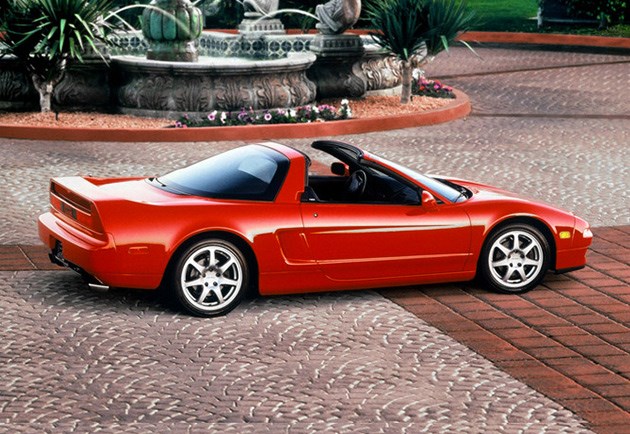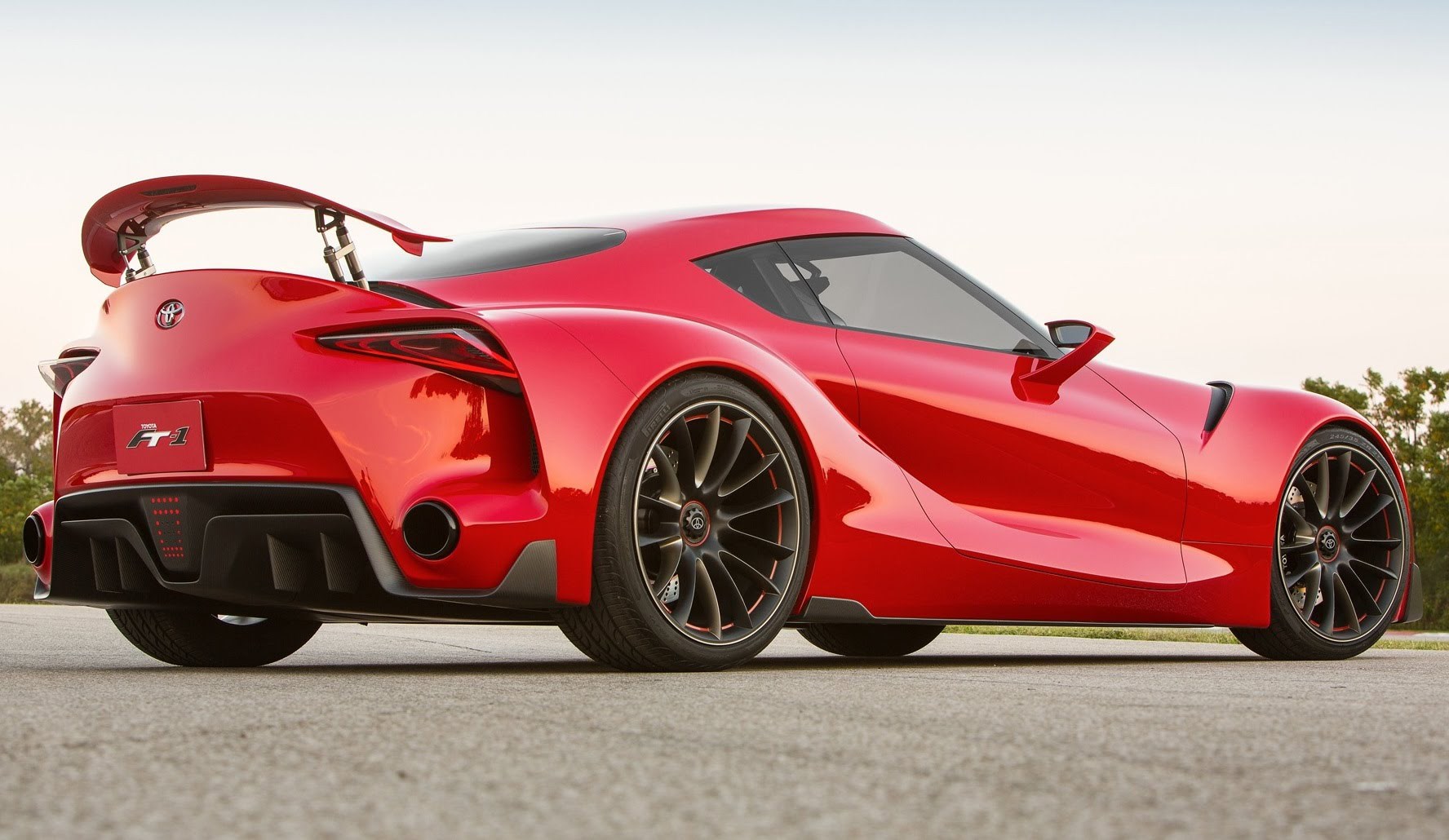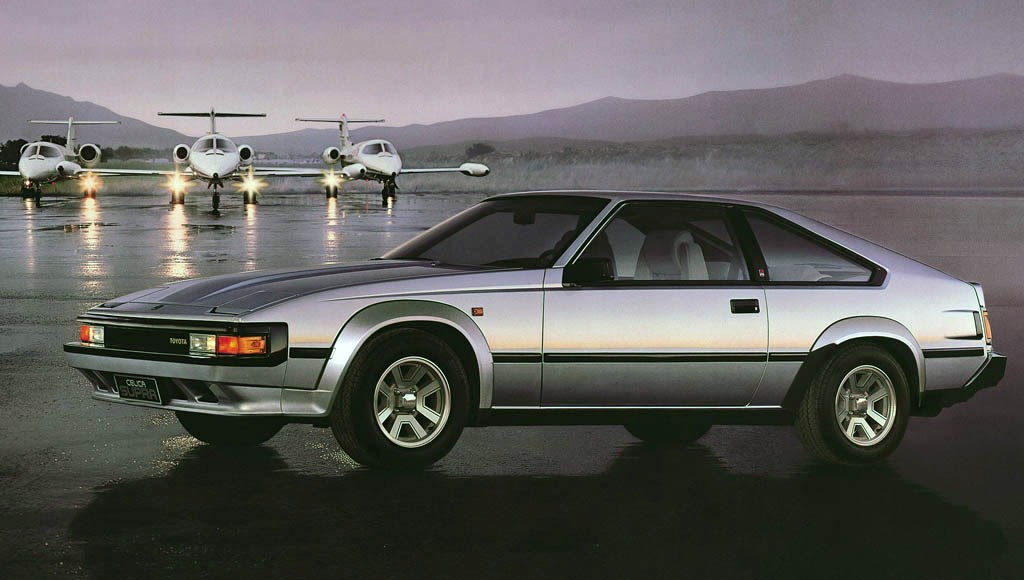You wait decades for the rebirth of an iconic Japanese performance nameplate and then all of a sudden, two come along at once.
We were already fizzing with the notion that finally, after years of will-they-won’t-they shenanigans, we’ll see an all-new Honda NSX coupe this year. Then, a couple of weeks ago, and after a similarly long period of winking and nudging, Toyota confirmed that a brand new Supra was on the way. Let’s party like its 1990!
Honda/Acura NSX
The original Honda NSX became something of a legend in its own lifetime, thanks mainly to its association with Formula 1 world champion Ayrton Senna, who added his two cents’ worth to the performance coupe’s development programme.
Known in long-hand as the New Sportscar eXperimental, the NSX was something of an engineering tour de force.
It was the first mass-produced performance car to feature an all-aluminium monocoque body and boasted a complex rigid honeycomb frame crafted from extruded aluminium.
It was the first production car to feature titanium con-rods in its 3.0-litre V6 engine and the driver’s cockpit glasshouse was modelled on that of an F-16 fighter jet. Which even though it was the 80s, still makes a lot of sense now.
It also featured some arresting aerodynamic styling cues, such as that massive full-width integrated rear spoiler and a front-end that eschewed the usual low splitter in favour of clever underbody panelling, framed with tiny wind-diverting wings.
All this work on the aero packaging and weight-saving meant the NSX was a seriously competitive car from the outset. A hardcore NSX R version clocked a 7min 56sec lap of the Nurburgring, putting it on par with performance times recorded by contemporary German and Italian hardware.
Given the long shadow the car has cast across Honda’s patchy performance efforts since, you might be surprised to learn we’ve been without an NSX for just 10 years. That’s right; the original was still manufactured (primarily for the American market) until 2005.

An original Honda NSX with Targa Top Photo / Supplied
The new one? Oh it promises many wondrous things.
It’s as technically forward-thinking as its predecessor was in 1989; weight-saving construction is once again the primary engineering philosophy, while an efficient hybrid powertrain plays a significant part too. The NSX features three electric motors augmented by a mid-mounted twin-turbo 3.6-litre V6, giving the supercar combined power of 427kW and 550Nm; usable performance figures to say the least. The estimated 0-100km/h sprint could be as quick as three seconds, while top speed will be 300km/h-plus.
The NSX will feature a nine-speed dual-clutch automatic transmission and drive to all four wheels. All-in-all we’re talking a supercar which promises to be every bit as astounding as the original. And as slightly left-field; one of the four drive modes is apparently labelled “quiet”.
About the only disappointment is the badge. Rather than the globally-positioned Honda logo, the 2017 NSX will wear the nameplate of Japan’s American market luxury brand, Acura. Still, I’m sure we’ll get over that in time.
Toyota Supra

The Toyota FT-1 Concept is rumoured to be the basis for the next Supra. Photo / Supplied
The Supra is such a storied nameplate, stretched out over 20-plus years of production, that one person’s favourite rear-drive V6 coupe might not be another’s. Individual Supras can appeal to entirely different fan bases.
The car started life as the Celica XX in Japan in 1978 and went through several iterations until its official withdrawal from sale in 2002. The squared-off A60 generation of the early 1980s and the rounder A80 Supra, which existed for a decade from 1993, proved popular globally and gained Toyota — a company that had built its reputation around reliability and practicality — huge amounts of performance credibility in markets such as Australia, New Zealand and the US.
And now a new Supra has been confirmed.
With its rear-wheel drive Corolla AE86 lineage, the popular 86 sports coupe proved a surefooted step for the manufacturer when launched four years ago.
But the Supra promises to be something else again; a reprise of a historic performance nameplate, matched with Gotham-tastic supercar looks we’ve already seen previewed in embryo.
What’s more, the Toyota 86’s big brother might turn out to be a joint venture with BMW. The two manufacturers have been sharing engineering expertise and it is thought that any Toyota sports car might also eventually form the basis of a BMW Z5 – as the name suggests, a next generation edition of the increasingly-ancient Z4 roadster.

1984 Toyota Supra Photo / Supplied
The Toyota/BMW partnership could also result in a jointly developed engine for both cars, although any specifics beyond the fact that – surely – the powerplant will feature six cylinders look unlikely to surface soon.
Tetsuya Tada, Toyota’s chief engineer for the carmaker’s sports car programmes, has said the new Supra will probably be based on the rather fantastic-looking Toyota FT-1 concept, unveiled in 2014.
Speaking to Australian journalists, Tada cited the long gestation the Toyota 86 took in getting from FT-86 concept to production-ready sports car as a likely development path any new Supra would need to follow.
So, while Toyota has teased the idea of showing off a “preview concept” Supra several times, we’re still a little way off on this one yet.
The latest rumour suggests we’ll see an almost-but-not-quite concept later this year, but the production car probably won’t be ready until 2018.
The Supra nameplate alone assures Toyota a slavish audience of fanboys and girls who will have credit cards at the ready. I can already see motoring editors everywhere readying themselves for the inevitable Toyota Supra v Nissan GT-R feature face-off.
And all before we even discuss those persistent Mazda RX-9 rumours ...




